This $17,000 Hennessy X.O Decanter Is Wrapped In Gold-Dipped Bronze
Revered architect Frank Gehry collaborated with the cognac brand to create 150 ultra-luxe bottles.

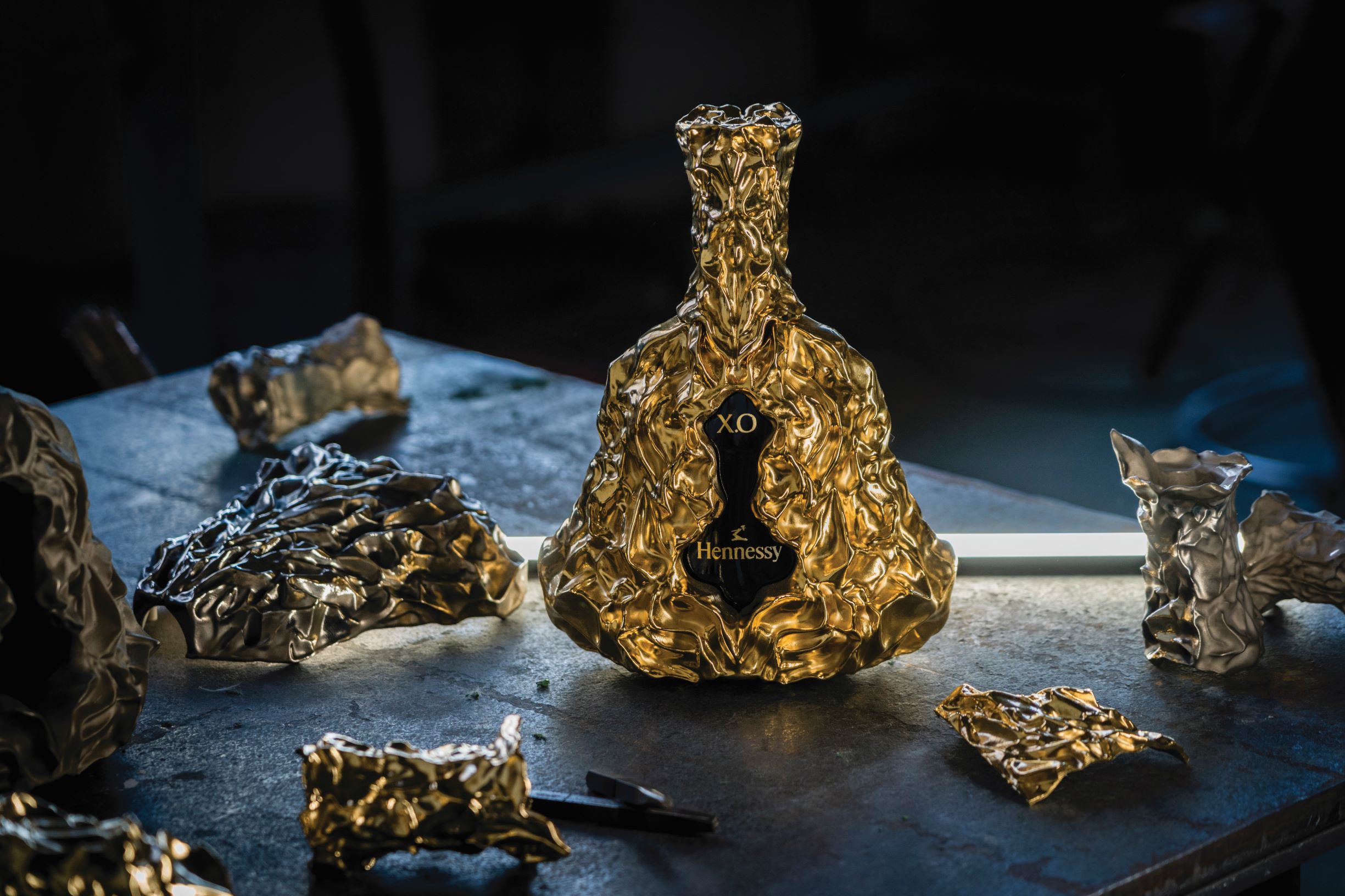
No less an authority than Vanity Fair once called him “the most important architect of our age.” And it was no exaggeration—Frank Gehry, designer of the Guggenheim Museum in Bilbao among other masterworks, has more than lived up to the moniker.
On his library shelf he has the pleasure of gazing upon the Pritzker Prize, the National Medal of Arts, the Presidential Medal of Freedom, and the Légion d’honneur, among other achievements. And alongside them he can now place a decanter of one of the world’s finest cognacs, that is a sculptural masterpiece in its own right.
Hence its name, the Hennessy X.O X Frank Gehry Masterpiece. Limited to just 150 signed and numbered decanters priced at around $17,000 apiece, the vessels of precious elixir have all the presence and panache of one of his iconic buildings. Truly a merger of the avant-garde and the traditional, they contain Hennessy X.O, the cognac created in 1870 by Maurice Hennessy for his family and friends, the first “Extra Old” (X.O) cognac ever; the collaboration coincides with its 150th anniversary.
Gehry’s creation in gold and glass is an evolution of the famed X.O carafe-shaped decanter, created in 1947 by Maurice Hennessy’s great-grandson, Gérald de Geoffre. Gehry drew inspiration from the rich soil, twisted grapevines, and winding Charente River of France’s Cognac region, home to the Hennessy Maison, enveloping the decanter in a crinkled sleeve of 24-carat gold-dipped bronze. It is further encased by a fractured glass “glorifier,” with a crumpled effect, both catching the light and giving the illusion of movement.
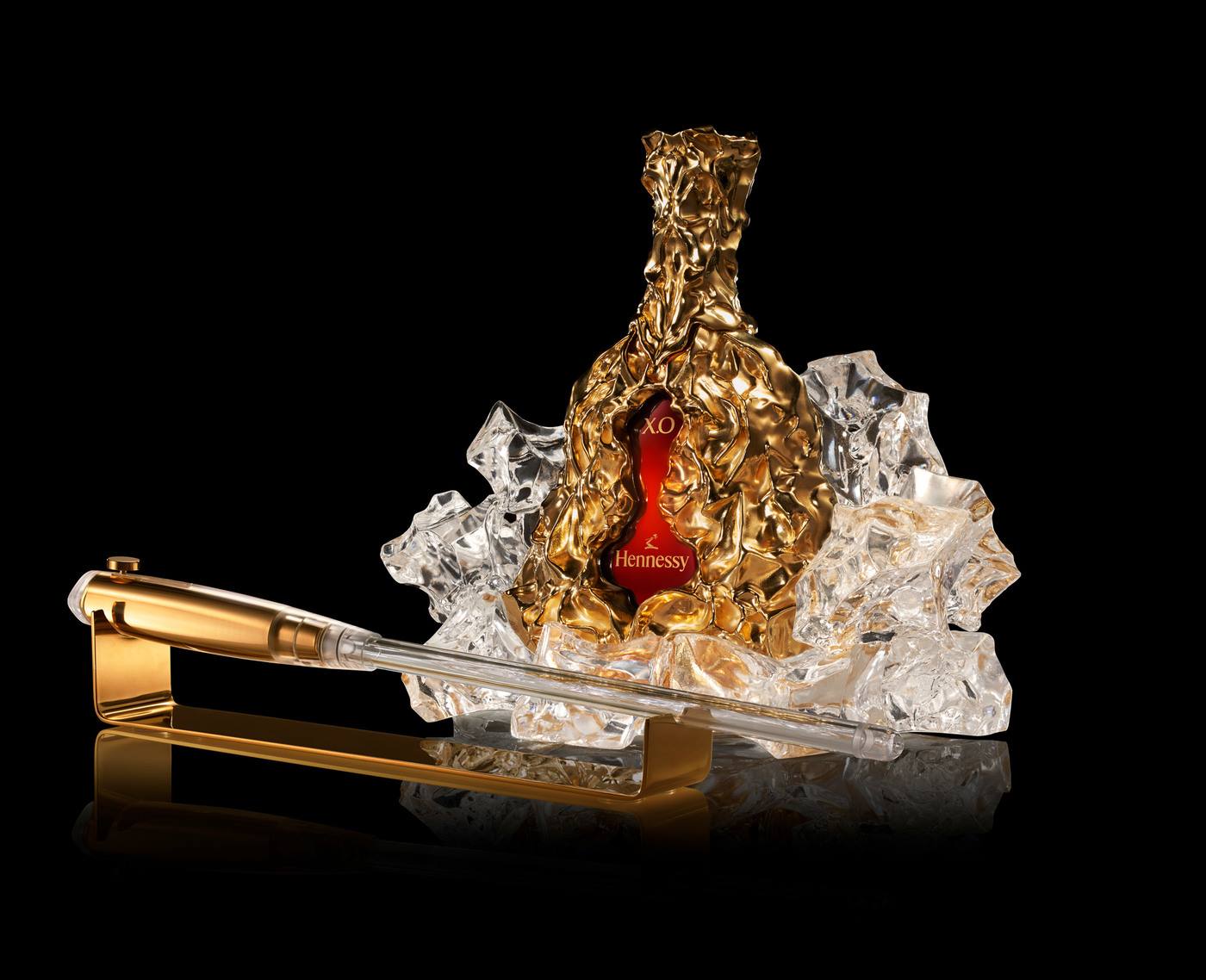
Finally, Gehry created a luminous fusil, the pipette used to draw portions of eaux-de-vie from their casks, out of glass and gold. Here the great architect discusses what went into the historic collaboration.
What made you want to collaborate with Hennessy?
I took on this collaboration as I was enticed by the rich history of Hennessy X.O and the Maison Hennessy. It was an honor to take on the challenge of designing a symbol of an iconic cognac that represents 150 years of technique, labor, and emotion from a storied lineage of family and craftsmen.
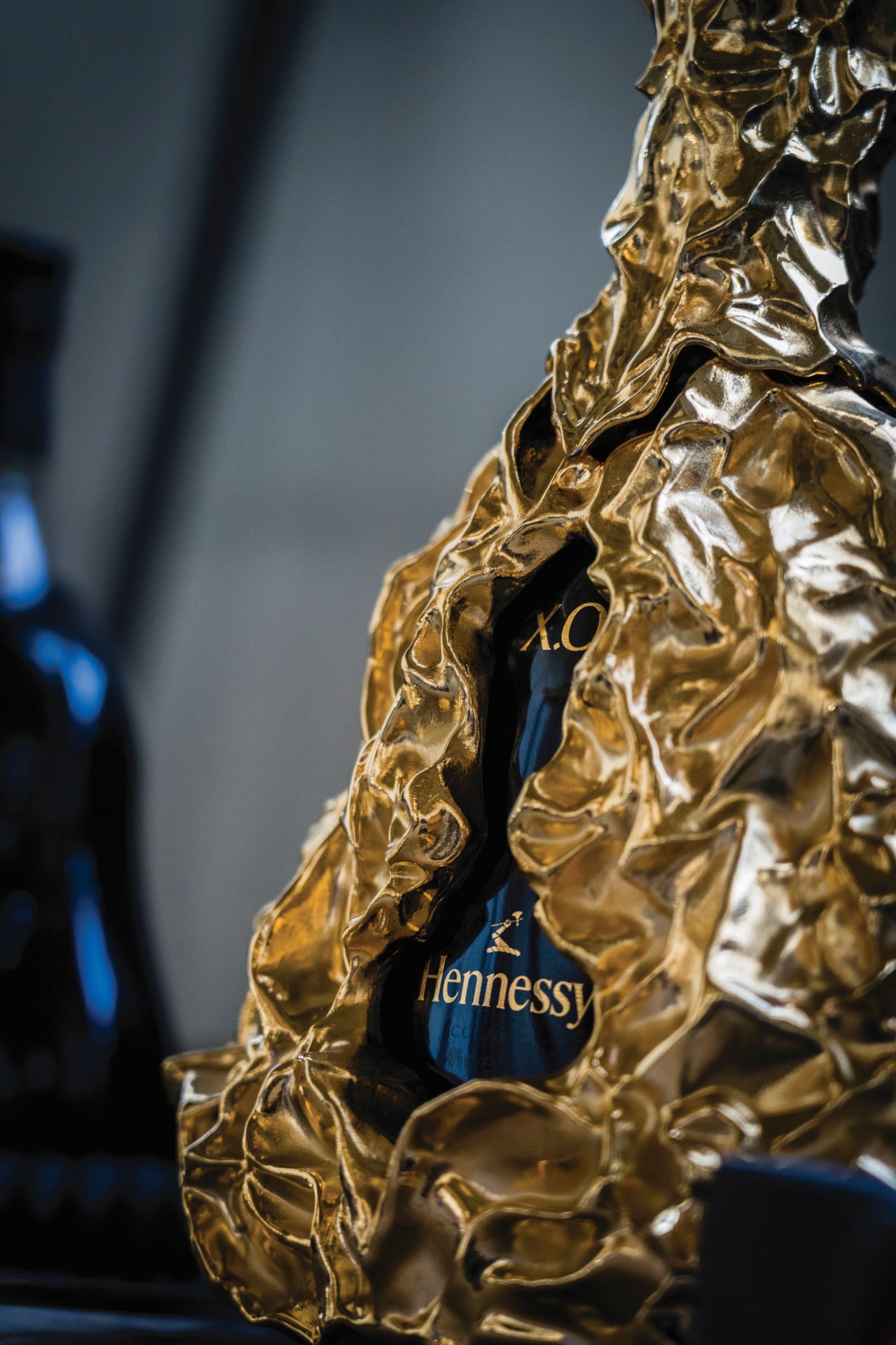
Why did you choose the materials that you used?
I wanted this collaboration with Hennessy to be not just a decanter but a sculpture. Using strong but elegant materials enabled us to create a strong shape while projecting beauty. For the decanter, using bronze to craft the shell allowed us to replicate the Charente River’s surface texture, which we dipped in gold to create a finish that catches the light and mesmerizes like water. We crafted the glorifier out of translucent glass; I had worked with glass chunks on a building in Chicago and have been wanting to use that technique in another project—the glass creates the illusion of a splash of water surrounding the decanter.

How would you describe your creative process?
Creativity is at first curiosity. Creative ideas come from being curious about the subject, asking questions and discovering along the way, not being afraid to try new things. When I design, I try new things, I make multiple designs and models until I land on the final product that feels just right.
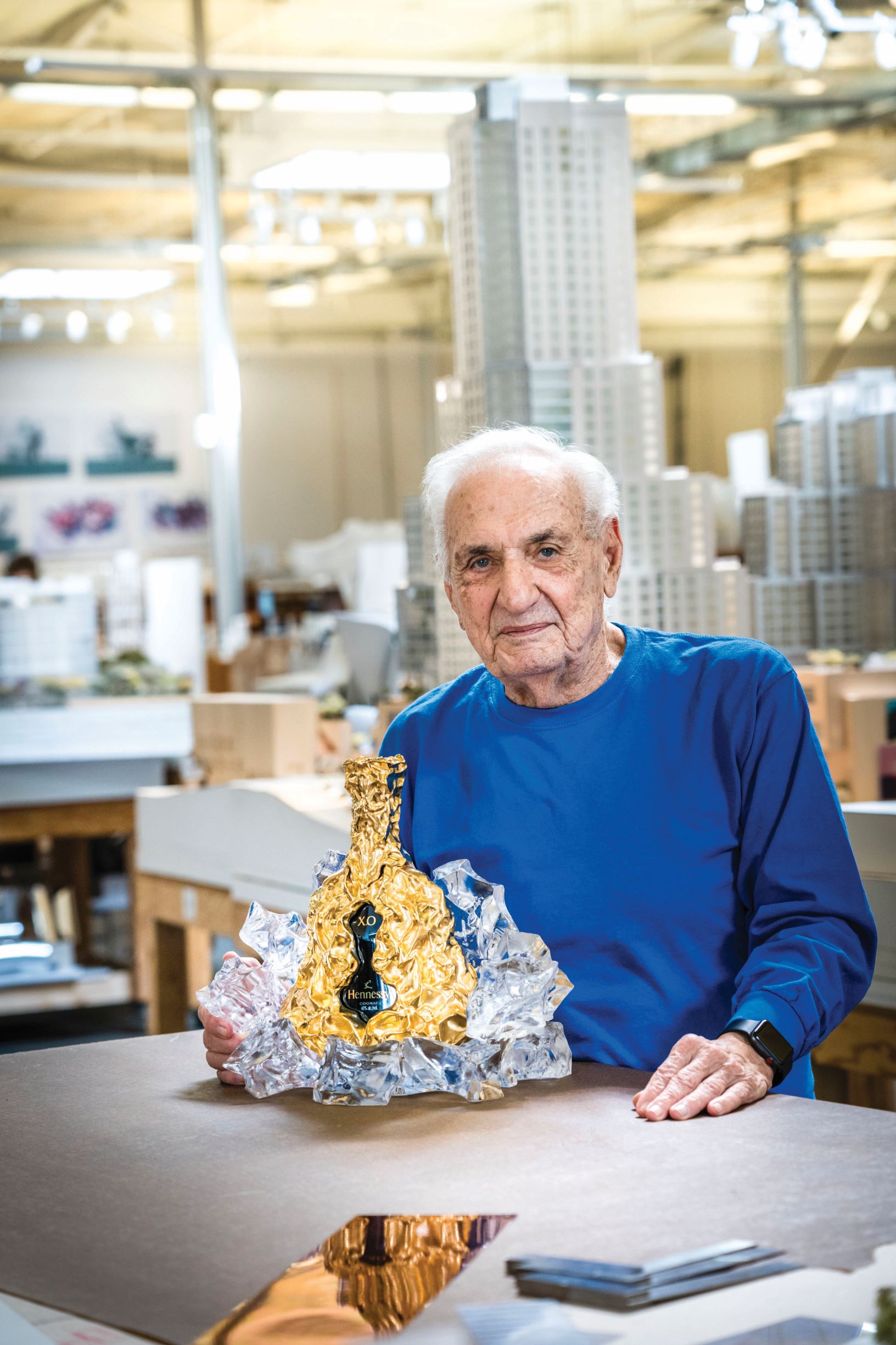
What is the common thread in your designs, whether it be a decanter or a building?
It’s heartfelt. It’s an engagement with the people that I’m working with and embracing their culture, which is different than mine. With Hennessy, the culture is a commitment to excellence, from the people crafting the barrels to the tasters; they want excellence in everything they do and want the accoutrement of Hennessy X.O to be on par with the taste.
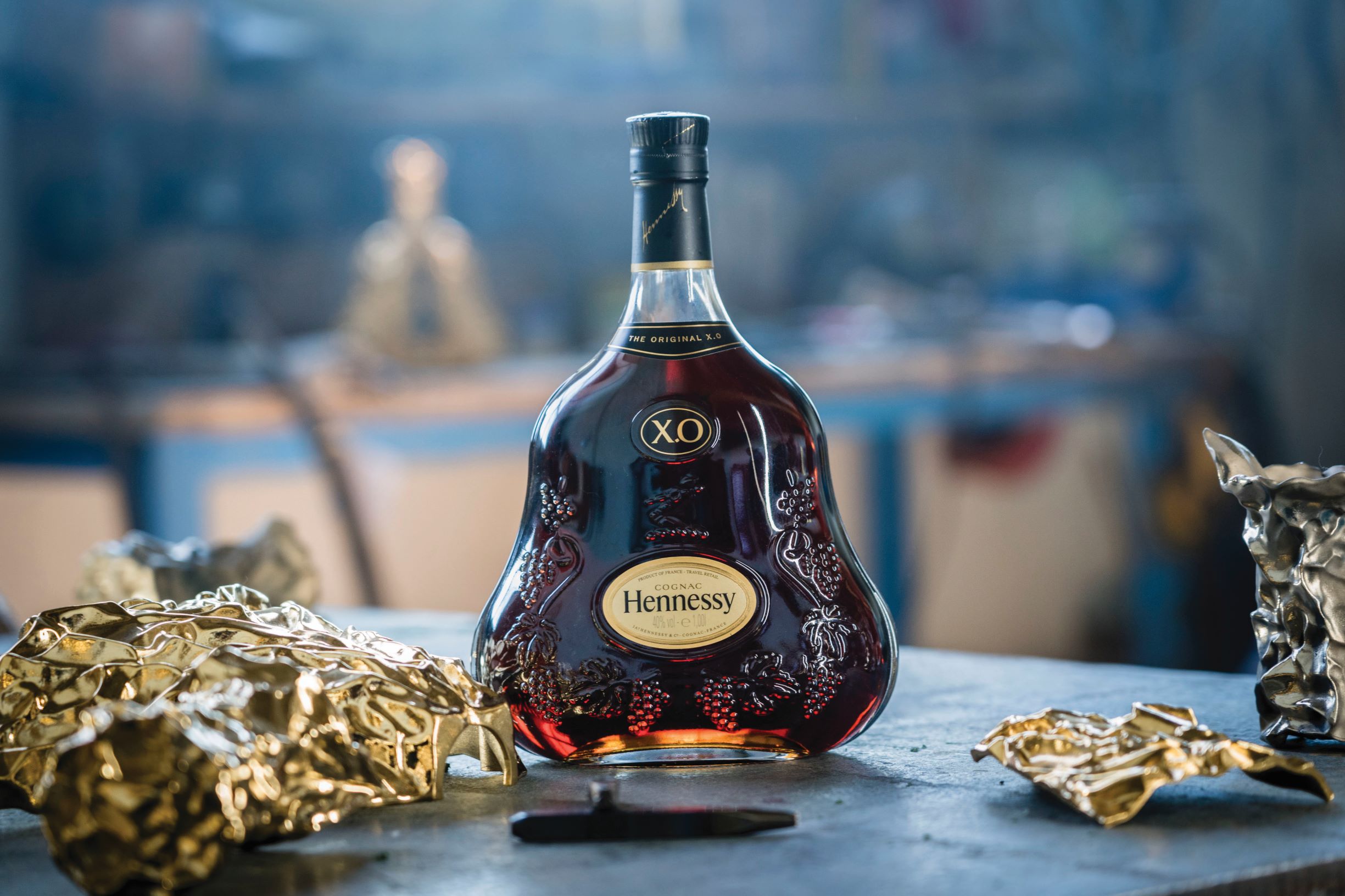
Do you think good design should create an emotional connection with the viewer?
About 50 years ago, I went to the Delphi Archaeological Museum in Greece, and I stood in front of a statue called the Charioteer of Delphi, one of the most famous surviving bronze sculptures from Ancient Greece. I looked at the statue and started crying. I felt emotion transmitted through the bronze cast, and it was a really powerful notion to me that you could transmit emotion through inert materials; therefore, it meant architecture could create an emotional response; and furniture does, painting does, and sculpture does—so everything can do that. I think this decanter and glorifier we’ve created express emotion from the culture they were born from.
